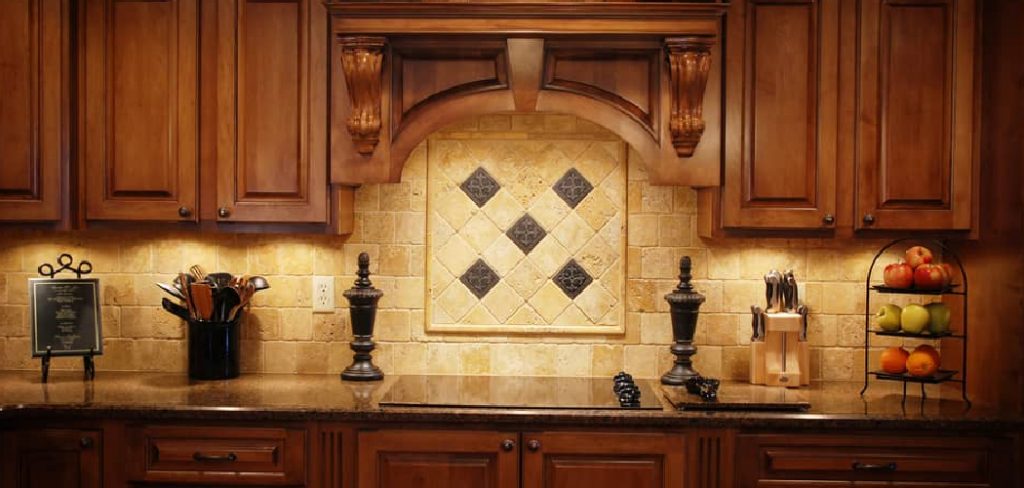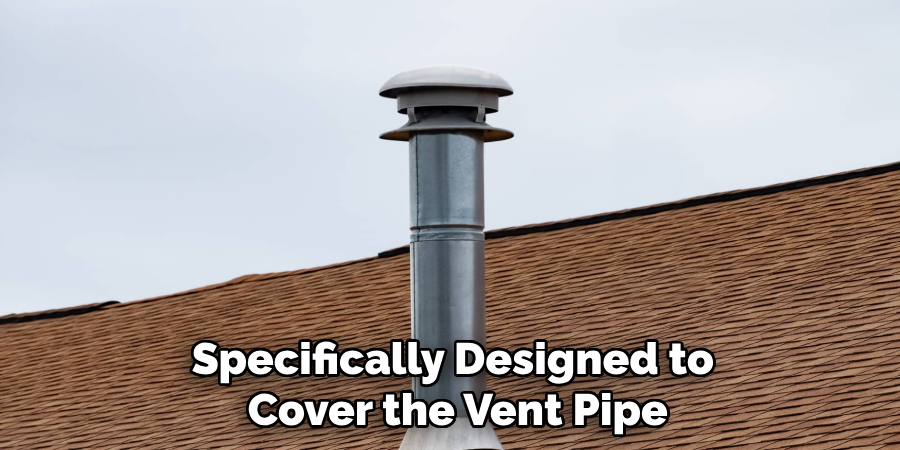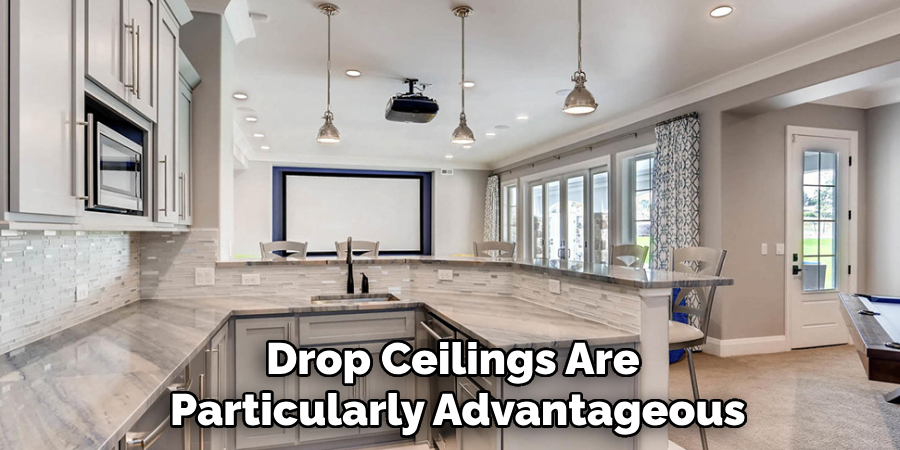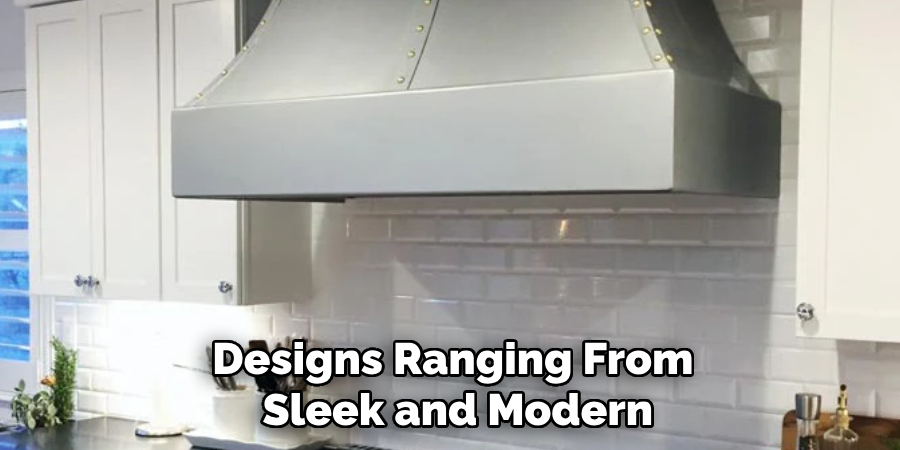Kitchen vent pipes are essential for maintaining air quality by removing smoke, odors, and moisture from cooking. However, their often bulky and unattractive appearance can detract from the overall aesthetic of your kitchen.

Hiding these vent pipes improves your space’s visual appeal and contributes to a more streamlined and cohesive design. This guide will explore various creative and practical methods to conceal kitchen vent pipes, ranging from simple DIY solutions to more elaborate remodeling options.
Whether your style leans towards modern, rustic, or traditional, there are numerous ways to effectively address the question of how to hide kitchen vent pipe without compromising their functionality. From cabinetry and false ceilings to decorative elements and innovative wall treatments, we’ll discuss how you can integrate vent pipes into your kitchen design while enhancing the space’s overall look and feel.
Use Cabinets to Conceal the Pipe
Built-In Cabinetry
One of the most effective ways to hide a kitchen vent pipe is by incorporating it into your cabinetry. If you’re planning a kitchen remodel or installation, consider designing cabinets that can accommodate the vent pipe.
This approach conceals the pipe and utilizes the space for additional storage. By designing cabinets around the vent pipe, you can maintain a clean and uncluttered look while also ensuring that the kitchen remains functional and aesthetically pleasing.
Custom Cabinet Design
Work with a cabinet maker to create a custom solution that includes a cabinet specifically designed to cover the vent pipe. This can include doors that open for easy access when maintenance is required.
Custom cabinetry allows for flexibility in design, which can be particularly advantageous when trying to match the new cabinet with your existing kitchen style. If your kitchen layout allows, you might also create a raised panel that matches the rest of your cabinetry. This creates a cohesive look that integrates seamlessly with the rest of the kitchen.

Upper Cabinet Solutions
For homes with upper cabinetry, you can run the vent pipe through the upper cabinets, which can help hide it. Design the cabinet with an open shelf or decorative doors that blend in with the kitchen design. This solution not only hides the vent pipe but also maintains the structure and usability of the cabinets. Coordinating materials and finishes can help ensure the cabinet installation looks intentional and professional.
Using Open Shelving
If your kitchen features open shelving, consider strategically placing your shelves to create a visual distraction from the vent pipe. This can involve hanging decorative items, plants, or dishware that draw the eye away from the pipe while allowing airflow.
The key with open shelving is to balance functionality with aesthetics, ensuring that the shelving remains both practical and a kitchen design feature. With thoughtful arrangement and design, open shelving can serve as both a functional element and a stylish way to conceal unsightly vent pipes.
How to Hide Kitchen Vent Pipe: Create a False Ceiling
Installing a Drop Ceiling
A drop ceiling, also known as a false ceiling, effectively conceals kitchen vent pipes while contributing to a sleek, modern aesthetic. This technique involves lowering the ceiling, allowing the vent pipe to be hidden above it, thus creating a uniform and polished appearance.
Drop ceilings are particularly advantageous in kitchens with high ceilings, where reducing the ceiling height won’t impact the room’s overall sense of space. When planning to install a drop ceiling, consider the materials and style that will best complement your existing kitchen décor, ensuring a harmonious integration.

Ceiling Panels
If a full drop ceiling installation is impractical, selectively use ceiling panels around the vent pipe. This method offers a degree of flexibility, allowing you to target only the areas necessary to conceal the pipe.
Ceiling panels can be chosen to match your existing ceiling for a subtle effect, or contrasting colors and textures can be used to introduce an interesting design element to the room. This approach offers a versatile way to enhance your kitchen’s aesthetic while effectively hiding unsightly vent pipes.
Crown Molding Integration
Incorporating crown molding is another stylish option for masking vent pipes while adding an elegant touch to your kitchen. Extending the crown molding design to enclose the vent pipe produces a seamless look that convincingly camouflages the pipe.
This method not only hides the pipe but also elevates the overall decor with the classic sophistication that crown molding provides. Make sure to select molding that coordinates well with your existing kitchen elements for a cohesive and sophisticated appearance.
Lighting Considerations
Lighting considerations play a crucial role in the overall design when opting for a false ceiling. Integrating recessed lighting or decorative fixtures into the new structure can enhance the ambiance of your kitchen, drawing focus away from the vent pipe.
Recessed lighting offers a clean and modern look, while decorative fixtures can introduce personality and character into the space. Proper lighting improves functionality and contributes significantly to the room’s mood and appeal, ensuring that your kitchen remains a comfortable and inviting environment.
How to Hide Kitchen Vent Pipe: Use Decorative Coverings
Vent Pipe Covers
Decorative vent pipe covers offer a stylish and functional solution for concealing unsightly kitchen vent pipes. Available in a variety of materials, such as metal, wood, or plastic, these covers can be purchased or custom-made to fit seamlessly over the vent pipes.
With designs ranging from sleek and modern to ornate and traditional, there is a cover to suit every kitchen aesthetic. By choosing a cover that complements your existing kitchen style, you can transform the vent pipe from an eyesore into an integrated design element that enhances the overall appeal.

Wooden Boxes or Faux Beams
Another attractive option is building a wooden box or faux beam to enclose the vent pipe. This approach hides the pipe and adds an architectural feature that can enhance the kitchen’s design.
Depending on the material and finish, a wooden box can introduce a rustic charm with its natural wood grain, or a faux beam can add a modern edge with sleek lines and finishes. By painting or staining the box to match the cabinetry or ceiling, you create a cohesive look that blends harmoniously with the rest of the kitchen decor.
Fabric Draping
Fabric draping offers an innovative way to hide vent pipes for those who prefer a softer and more whimsical aesthetic. This technique involves selecting a fabric that complements your kitchen’s color scheme and style and carefully draping it around the pipe.
Ideal for informal or eclectic designs, the draped fabric introduces texture and warmth to the space. It’s important to ensure the fabric is securely attached and positioned so that it doesn’t obstruct the vent’s airflow, maintaining both functionality and aesthetics.
Paint to Match
If the vent pipe is located in a prominent area where full concealment is not possible, painting it to match the surrounding walls or cabinetry can help it blend into the background. By choosing a paint color that mirrors the existing palette of your kitchen, you can minimize the pipe’s visual impact, making it less noticeable.
This simple yet effective technique enables seamless integration into the overall room design, ensuring that the vent pipe does not detract from the kitchen’s aesthetic harmony.
Integrate with Wall Treatments
Paneling
Adding paneling to the wall effectively conceals a vent pipe while enhancing your kitchen’s overall decor. Select wood or decorative panels that align seamlessly with your kitchen’s style, whether it be rustic, modern, or traditional.
The paneling can be installed from the floor to the ceiling, creating an uninterrupted and seamless appearance that effectively hides the vent pipe. This method ensures a harmonious and integrated design by using materials and finishes that echo existing elements within your kitchen, such as cabinetry or flooring.
Wallpaper or Vinyl Wrap
If your kitchen features decorative wallpaper or a vinyl wrap, extending it over the vent pipe area can make the pipe blend with the surrounding decor, diminishing its visibility.
Choose designs and colors that complement your kitchen’s existing style to create a unified look. This approach is particularly effective in kitchens with bold or intricate wallpaper patterns, as the visual complexity camouflages the vent pipe entirely. As a result, the vent pipe becomes part of the overall aesthetic rather than a distraction from it.
Tile Treatment
In kitchens adorned with tile, incorporating a decorative tile treatment around the vent pipe can elevate the kitchen’s design while efficiently concealing the pipe. Opt for tiles that match or complement your backsplash or floor to maintain a cohesive appearance.
This method provides a visually pleasing solution and adds a layer of durability and ease of maintenance around the vent area. With thoughtful selection and placement, the tiles can transform the vent pipe from a utilitarian necessity into an integrated kitchen decor component.

Conclusion
Hiding a kitchen vent pipe doesn’t have to compromise the functionality of your kitchen. With various methods, such as cabinetry, false ceilings, decorative coverings, and creative design elements, you can effectively conceal the vent pipe while maintaining the room’s aesthetic appeal.
Assess your kitchen’s layout and design preferences to determine the best approach for how to hide kitchen vent pipe. Consider both practical and decorative options, ensuring that the solution you choose complements your overall kitchen style while allowing for the vent pipe’s necessary airflow.
By integrating these solutions, you can create a cleaner, more streamlined kitchen that remains functional and visually appealing, enhancing your cooking space for both you and your guests.
Professional Focus
Angela Ervin, a former interior designer turned blogger, specializes in kitchen design and renovations. Through her website, she blends her passion for cooking with design expertise, sharing practical and creative ideas. Known for balancing functionality and beauty, Angela’s insightful content has made her a trusted voice in home design and lifestyle.
About the Author
Angela Ervin, an experienced interior designer and blogger, combines her passion for kitchen renovations with storytelling. Living in Petersburg with her family, she enjoys cooking and testing her projects firsthand. Known for her humor and relatable style, Angela shares creative, functional design insights through her content, making her a trusted voice in home design.
Education History
University: Virginia Commonwealth University
Degree: Bachelor of Fine Arts (BFA) in Interior Design
- Angela’s education at VCU focused on mastering core interior design principles, including spatial planning, color theory, materials selection, and sustainable design practices.
- She gained hands-on experience through studio projects and collaborative design exercises, which honed her ability to create functional and aesthetically pleasing environments.
- Her coursework also emphasized problem-solving and practical applications of design, preparing her for real-world projects like her self-directed kitchen renovations.
- The program’s strong foundation in both technical skills and creative expression shaped Angela’s ability to seamlessly integrate form and function in her work.


